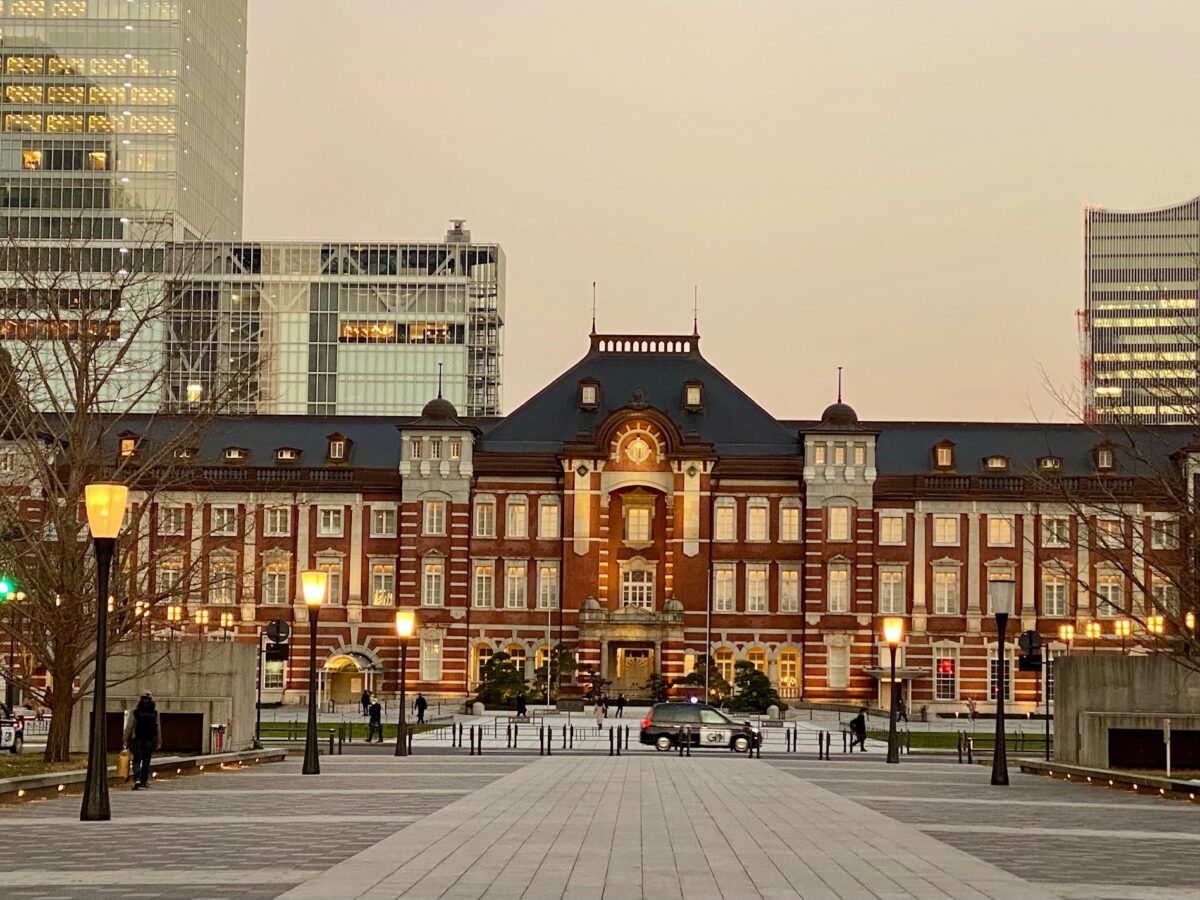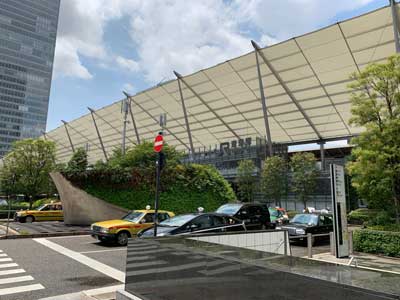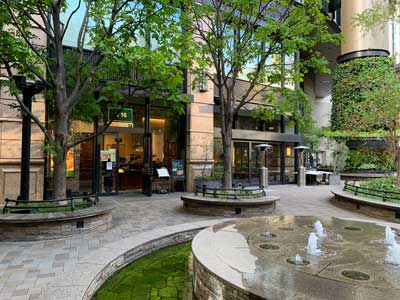The iconic red-brick building in which Tokyo Station is housed is in itself already enough reason to check out the area surrounding Tokyo Station. Besides the Imperial Palace and Ginza area, what else is there to see and do in the vicinity of Tokyo Station?


Short History of Tokyo Station
The location of Tokyo station was chosen because of its proximity to the Imperial Palace, a logical place for the central station of Japan’s capital city. While nowadays the area surrounding Tokyo Station is a blooming financial district, in 1914 when the first version of the station was built there was not much else in the area beside the palace. The station building was designed by Kingo Tatsuno, who also designed the building for the Bank of Japan and was very adept at a style called ‘European Renaissance’.
Unfortunately, the original building was completely destroyed during WW2, and the building that was built in its place right after the war was a sad replacement for the grandeur it once was. Thankfully, in 2012 the building was completely renovated and restored to resemble the original buildings much closer, which end result is what you will see if you visit Tokyo Station today. Especially note the two domes at the Marunouchi north and south exits, the roofs are beautiful pieces of art.
Other Noteworthy Marunouchi Buildings
Here is a list of other buildings besides the station itself that are worth a look:
- Mitsubishi Ichigokan Museum; this building was the first Western-style office building in the area after the Meiji Restoration took place. It was demolished and rebuilt and reopened again in 2010, having been exactly copied from its original design. The museum is loved by people who are interested in visual art. The vertical gardens and inner yard are refreshing green spaces in the city.
- Meiji Seimeikan; built in a Western classical style, the building where the Meiji Life Insurance company is housed, was built just before WW2 started. It then survived the bombings of the war as one of the very few buildings in the area and was used as a headquarters for the American military.
- Bank of Japan Head Office Building; also designed by Kingo Tatsuno just like the building of Tokyo Station, this building looks very similar to the building where the National Bank of Belgium is housed. The building survived both the earthquake of 1923 and the bombings of WW2, making it one of the very few buildings of its time still standing in Tokyo.
- Kitte building; built on the site where there used to be a large post office, the designer of the Kitte building has stayed true to the building’s original purpose. The facade of this building looks very similar to what the front of the post office building used to look like, while the interior of the mall looks very modern and has all the modern amenities you would expect. A special mention goes to the free Intermediatheque on the 3rd floor that has an interesting exhibition of all kinds of scientific and cultural heritage. Also, check out the Kitte Garden observation deck from which you have a great view of the trains arriving at and departing from Tokyo station.
- Tokyo International Forum; the most ‘young and modern’ building on the list, this glass ship was designed by Uruguayan/US architect Vinoly in 1989 and chosen as the winning design in the public design competition that was held in order to find a functional design. It is used as a multi-purpose space and you can freely walk in. Besides the spacious, interesting design I also like the photographs that hang on the wall when you walk up that depict the daily life of workers in the mid-20th century.
Marunouchi Dining
If you don’t want to leave the station, you can choose from dozens of restaurants in the underground maze under Tokyo Station without ever leaving the station, which makes it a perfect destination for lunch or dinner on a rainy day. Just realize that because Tokyo Station is in the middle of a populous business district, weekdays between 12.30 pm and 2 pm and between 7 pm and 9.30 pm are best avoided if you want to try a popular restaurant without standing in line. Weekends are usually fine, and coming early for lunch (11.30 am -12 pm) or dinner (5.30 pm – 6.30 pm) also pays off.
The major office buildings of Marunouchi also have great options for lunch and dinner, as they cater to the enormous population of salarymen and office ladies that spend many of their waking hours here. They tend to look forward to their lunch and dinners a lot, so they tend to be a picky lot when it comes to restaurants, especially if it is a client dinner or co-worker get-together.


This means that restaurants in Tokyo office buildings tend to be of superb quality. The Marunouchi Building, Kitte Building, and Shin-Marunouchi Building are good places to go for this purpose, and you can’t really go wrong on their restaurant floors. It is usually a bit more pricey than what you will find under Tokyo Station, but well worth the premium.
Yurakucho Dining
Then there is dining in Yurakucho, an area a few 100 meters south from the Marunouchi South Exit. Look under the train tracks, and you will see a wealth of usually tiny restaurants with most of their seating alfresco. It is fun just to walk around the area after dark on weekdays to see how the population of office workers blows off steam after a long workday, but it is also a great dining option for the slightly more adventurous eater.
Adventurous as in that English menus are still quite rare, many menus are hand-written not making it easy to use a translation app, and not all dishes are what you would find in your average Japanese restaurant back home.
Typical izakaya fare such as yakitori, other skewered food such as pork or vegetables, grilled fish, sashimi (including raw whale meat and horse meat), and karaage fried chicken. No matter what you (accidentally) choose though, you can be sure that your food will go very well with a cold glass of beer, sake, or shochu. A few Yurakucho izakaya with good reviews are Andy’s Shin Hinomoto, Kusunoki, and Shimantogawa.
Shopping in Marunouchi
Ginza might be the more famous shopping district, the streets of Marunouchi also have their little shopping heavens and surprises. The already mentioned Kitte building boasts nearly 100 shops with adult fashion, accessories, souvenirs, and more. Marunouchi Brick Square is a beautiful little outdoor area with a European vibe to it. You can find cafes and small boutique stores here, great if you are looking for something special.
Marunouchi My Plaza has Comme Des Garcons, a popular Japanese fashion brand that is interesting to those looking to buy something not many others will have at home. Marunouchi oazo consists of 4 interconnected buildings with a lot of shops in all kinds of categories. Notable is its large Maruzen bookstore where book-lovers can easily spend a whole day.
For shopping in a fairytale-like atmosphere, you should come to Tokyo during the fall season and look out for the wonderful golden ginkgo trees that line Gyoko-Dori street in Marunouchi. If you come between November and February, make sure to catch Marunouchi after dark, as the area will be gorgeously illuminated in several locations.
Your Japan Tour
As seasoned Japan experts, we can help you create your perfect Japan tour including in-depth explorations of the architecture and local dining in the Tokyo Station area. Contact us to start planning your unforgettable holiday to this fascinating country full of once-in-a-lifetime experiences, culture, history, nature, and delicious food!